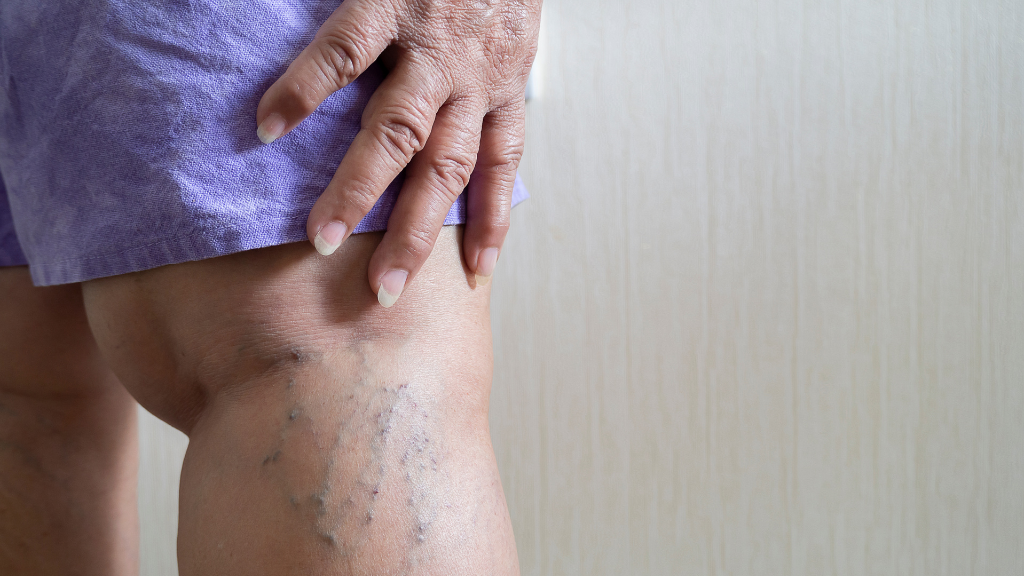This is a 6-minute read.
Lipedema and lymphedema have a lot in common. They’re both frequently misunderstood and misdiagnosed. While there are differences between the two conditions, conservative (nonsurgical) treatment is the same, and often patients with lipedema will have lymphedema as a result of lipedema damage.
What Is Lipedema?
Lipedema is a connective tissue disorder that doctors and patients sometimes mistake for obesity as it results in formation of fat deposits. This is why it’s often referred to as “the disease they call fat” — it involves fat, but not necessarily obesity.
Lipedema tissue is most commonly found in the hips, legs, and upper arms. The typical lipedema patient is a woman whose hips and legs are out of proportion to the rest of the body and seem to continue gaining fat tissue despite standard interventions like exercise and a healthy diet.
Lipedema tends to occur bilaterally and is symmetrical. There are four stages of lipedema based on its progression, and five types of lipedema defined by the affected region or regions of the body.
Up to 17 million people are thought to have lipedema in the U.S., although its confusion with other conditions like obesity and lymphedema suggests that this estimate may be far too low. Thousands or even millions of people with lipedema might not even know they have it.
What Is Lymphedema?
About 10 million people have lymphedema in the U.S., and this is also a frequently overlooked and misdiagnosed condition. Lymphedema occurs when there is damage to, or impairment of, the lymphatic system. This prevents the proper flow of fluid, causing the fluid to build up and the affected area to swell.
There are two main types of lymphedema: primary and secondary. Primary, or hereditary, lymphedema is present from birth and involves a lymphatic system that didn’t develop correctly in the womb.
There are several causes of primary lymphedema, including Milroy’s disease, Meige’s disease, and late-onset lymphedema. These are all considered congenital or genetic forms of primary lymphedema, even when these conditions aren’t diagnosed until later in life.
Secondary lymphedema, or acquired lymphedema, arises due to damage within the lymphatic system. It’s much more common than primary lymphedema and can be caused by a variety of factors, including cancer, lymph node removal, radiation treatment, surgeries, injuries, scarring, infections, and lipedema.
In the U.S., up to half of all breast cancer survivors and nearly 100% of those with head and neck cancers eventually develop lymphedema. About 80% to 90% of women who develop lymphedema are diagnosed with it within 3 years of breast cancer treatment.
Lipedema vs. Lymphedema Differential Diagnosis
The traditional view of lipedema vs. lymphedema is that lipedema is primarily a fat-based disorder while lymphedema is primarily a fluid-based disorder. New research into these disorders is challenging this thinking and indicates that there could be a more complicated interrelationship between them than once believed.
When lipedema reaches an advanced stage, it often develops symptoms of lymphedema due to impaired fluid flow within the body. A third condition, known as edema, can also be present with excess fluid and swelling. To understand the complex interrelationships among these disorders, please review a related article describing the lymphedema continuum.
Key points to consider when evaluating lipedema vs. lymphedema include:
- Lipedema appears bilaterally and symmetrically, while lymphedema is often unilateral and may appear to be either symmetrical or asymmetrical.
- Lipedema is non-pitting, and lymphedema involves pitting edema.
- Lipedema usually doesn’t involve the feet whereas lymphedema frequently involves the feet.
- Skin infections and open wounds are rare in lipedema but common in lymphedema.
- Swelling and fibrosis can be present in all stages of both lipedema and lymphedema, so keep in mind that the presence of these alone can’t be used as diagnostic criteria.
The patient’s experience with pain is another essential point to consider. Lipedema is sometimes called painful fat syndrome because these patients have inflamed, hardened, and painful nodules of fat under the skin. While lymphedema also comes with pain, a lymphedema patient’s pain tends to be more diffuse and feels like a more widespread heaviness or tightness, as opposed to nodulated points of pain.
One last fact about lipedema vs. lymphedema: Lipedema Awareness Month is in June and Lymphedema Awareness Month is in March. Of course, it’s important to build public awareness for both conditions year-round because they are both more manageable with the earliest possible diagnosis and treatment.
For More Information About Lipedema vs. Lymphedema
If you’re a lipedema or lymphedema professional or patient, please take a look at the innovative therapy options from Lympha Press. At Lympha Press, we’re dedicated to providing the education and equipment that helps people thrive while living with lipedema and lymphedema.








